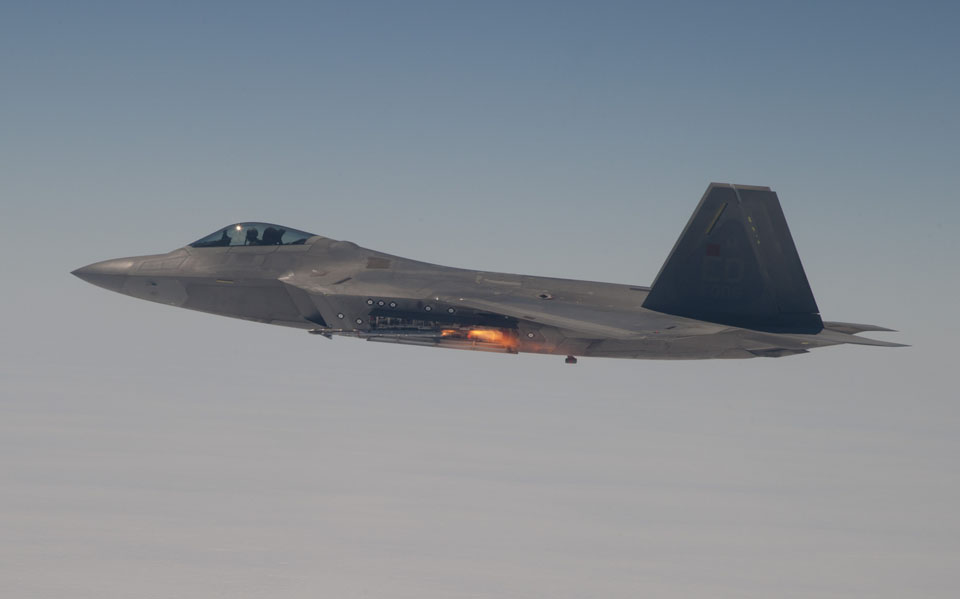

The first AIM-9X Sidewinder air-to-air missile launch from an F-22 Raptor traveling at supersonic speeds was carried out on July 30, 2012, over the Sea Test Range at Point Mugu, Calif. Maj. Ryan Howland of the F-22 Combined Test Force at Edwards AFB, California, was at the controls. The first launch of an AIM-9X from the F-22 was carried out in May 2012. This test firing was part of the flight testing and integration of the AIM-9X on the Raptor, expected to run through 30 August 2013.
Despite being the world’s best fighter, the integration of short range heat seeking air/air missile was a low priority, given the Raptor’s superb long-range capability in engaging hostile aircraft without being seen, due to its stealth advantage. Therefore, the weapon of choice for the F-22A Raptor is the Raytheon AIM-120C – six are carried in the internal weapon bay, along with two AIM-9M Sidewinders. On strike missions the Raptor can carry four missiles (Two AMRAAM and two Sidewinders), along with two 1,000 pound JDAMs or eight 250 pound Small Diameter bombs (SDB), both produced by Boeing.
When the AIM-9X will replace the AIM-9M on the F-22A it will bring a full sphere seeker, and Lock-On-After-Launch mode, providing more efficient launch from the weapon’s bay. Yet, even when armed with the latest Sidewinder, the Raptor will still lack advantage of the helmet-mounted display sight, which, by now, has been a standard issue with all US fighter jets. Without the helmet, Raptor pilots must point their missile’s seeker at the hostile aircraft to verify the missile is locked on the right target. The helmet would enable the pilot to slave the seeker to their line of sight, hence locking on by simply looking at the target, without having to turn the aircraft.
Originally designed to excel in BVR engagement, the Raptor faces quite a challenge battling Gen 4.5 fighters Within Visual Range (WFR). Indeed, close-in combat has been the ‘Achilles heel’ of the Raptor; despite the high maneuverability, as demonstrated in airshows, derived by high thrust to weight ratio and thrust vectoring, the stealth fighter tend to lose energy and slow on tight turns, as it maneuvers to lock on the target, offering opportunities to enemy fighters to close in.
















